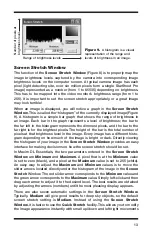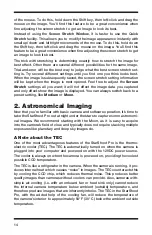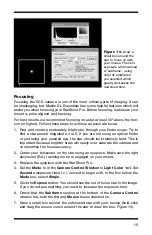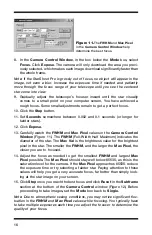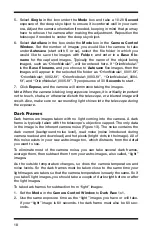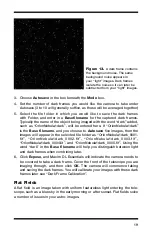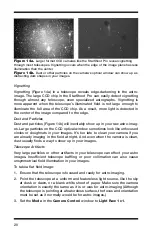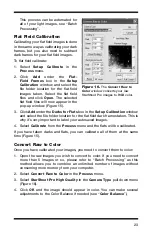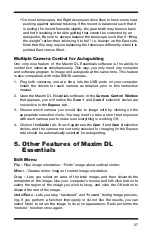
27
the amount of blurring applied to the image. Increasing the radius increases
the amount of blur applied.
For best results, turn on the
Auto Full Screen
preview button, and adjust
the settings. This allows you to rapidly adjust the settings until you are satis-
fied with the results. Then, click
OK
to actually apply the filter settings to the
image.
It is best to use a light touch with this command, to avoid over-processing the
image. Over-processing can create artifacts; i.e. features in the image that are
not real. It also amplifies the noise in the image.
Color Balance
The sensitivity of most CCD cameras as a function of wavelength (color) is dif-
ferent from the response of the human eye. The filters used for creating color
composites also have their own characteristics, as do the telescope optics.
Although “perfect” color rendition is an elusive if not impossible goal (all indi-
viduals see colors slightly differently), it is straightforward to get “good” color
balance with simple weightings. This is where the
Color Balance
command (in
the
Process
menu, Figure 19) comes in handy to touch up the resultant colors
in your images. Use the
Preview Image
to see how altering these parameters
will affect your image (or click the
Full Screen
button to see the changes
applied to your full image).
Color images from CCD cameras typically require a background level adjust-
ment. This is accomplished by bringing the background level (or bias) in each
color plane down to zero. Each of the
Background Level
values is subtracted
from every image pixel in its color plane. Any pixel values that become nega-
tive are forced to zero. The
Auto
button automatically determines the settings
Figure 19.
The
Color Balance
command allows
weighting of each
color plane to
improve the overall
color appearance
of an image.

